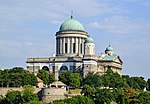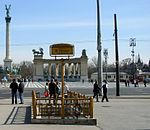Embassy of Indonesia, Budapest
Diplomatic missions in BudapestDiplomatic missions of IndonesiaHungary–Indonesia relations

The Embassy of the Republic of Indonesia in Budapest (Indonesian: Kedutaan Besar Republik Indonesia di Budapest; Hungarian: Indonéz Köztársaság Nagykövetsége Budapesten) is the diplomatic mission of the Republic of Indonesia to the Republic of Hungary. The first Indonesian ambassador to Hungary was Sarino Mangunpranoto (1962–1966). The current ambassador, Abdurachman Hudiono Dimas Wahab, was appointed by President Joko Widodo on 7 January 2019.
Excerpt from the Wikipedia article Embassy of Indonesia, Budapest (License: CC BY-SA 3.0, Authors, Images).Embassy of Indonesia, Budapest
Városligeti fasor, Budapest Terézváros
Geographical coordinates (GPS) Address Phone number Website External links Nearby Places Show on map
Geographical coordinates (GPS)
| Latitude | Longitude |
|---|---|
| N 47.5095366 ° | E 19.0763508 ° |
Address
Indonéz Nagykövetség
Városligeti fasor 26
1068 Budapest, Terézváros
Hungary
Open on Google Maps








